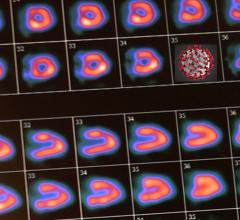May 13, 2016 — NorthStar Medical Radioisotopes LLC is enhancing its production operations at the University of Missouri Research Reactor (MURR) in Columbia, Mo., adding a new filling line that will quadruple the company’s capacity there to dispense the medical radioisotope molybdenum-99 (Mo-99).
NorthStar has contracted with Von Gahlen International Inc. to design and install the system, which will include a high-capacity DPharm unit to fill source vessels quickly, along with companion nuclear radiation containment chambers, or “hot cells.” Installation is scheduled to begin in November, with full operability targeted for the first half of 2017.
With the expansion, NorthStar is investing more than $3 million in its development of new processes for producing Mo-99 without the use of highly enriched uranium (HEU) and becoming the first producer of Mo-99 in the United States in more than 25 years.
Mo-99 is the parent isotope of technetium-99m (Tc-99m), the most widely used radioisotope in medical diagnostic imaging. It is used in approximately 40,000 procedures worldwide daily to diagnose and stage cancer, heart disease, infection, inflammation and other conditions.
Currently, all Mo-99 is produced overseas and most is produced in aging reactors using weapons-usable HEU, creating safety and national security concerns and the risk of product shortages. NorthStar is developing two non-uranium-based production processes that would help establish a domestic supply of Mo-99 and resolve the issues related to nuclear proliferation and the disposal of highly toxic radioactive waste.
In addition to significantly increasing dispensing capacity at MURR, the new filling line will be able to prepare source vessels containing Mo-99 generated from natural or enriched molybdenum-98 (Mo-98) targets. Enriched targets have higher concentrations of Mo-98 and produce approximately three times more Mo-99 than natural targets – 18-19 curies (Ci) compared to 6 Ci. A curie is a unit of radioactivity.
MURR will use the neutron capture production process being developed by NorthStar to supply Mo-99 through its Drug Master File. A Mo-98 target is bathed in neutrons, transforming a portion of it into Mo-99. The Mo-99 is extracted from the target and purified, and then moved to the NorthStar dispensing operation housed in the same facility. Waste created during Mo-99 production is minimal and relatively benign, making its disposal safe and inexpensive.
Source vessels are then filled with a Mo-99 solution using the DPharm and then shipped to customers for use with the RadioGenix isotope separation system. The RadioGenix system is used to extract the Tc-99m from the Mo-99, giving the radiopharmacy the key ingredient needed to create patient-ready doses of medical isotopes.
For more information: www.northstarnm.com


 August 03, 2023
August 03, 2023 









